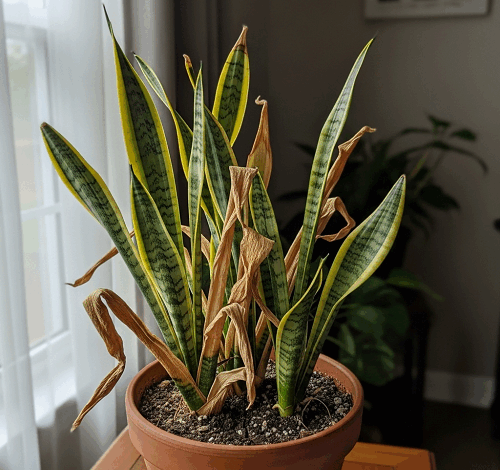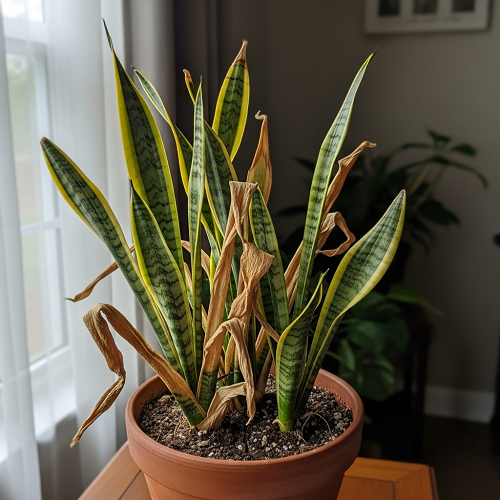How to revive a dying snake plant indoors?

Hey, do you want to know how to revive a dying snake plant indoors, How to revive a dying snake plant indoors water, How to save a dying snake plant, Snake plant dying signs, Snake plant dying from bottom up, How to save snake plant with no roots, Snake plant dying spiritual meaning? You are in right pace. Lets revive the Dying Snake Plant!
How to Revive a Dying Snake Plant Indoors
Snake plants (Sansevieria), known for their resilience, can still suffer from neglect or improper care. If you’re noticing yellowing leaves, mushy bases, or slow growth, your snake plant might be dying. Here’s how to bring it back to life indoors.

Snake Plant Dying Signs
- Leaves turning yellow or brown
- Wilting or drooping
- Soft, mushy base (root rot)
- Leaves falling over or collapsing
- Dry, cracked soil or overwatered soggy soil
- Foul odor from soil
How to Revive a Dying Snake Plant Indoors (Water & Light Fixes)
- Check the Soil Moisture
Snake plants hate overwatering. Stick your finger 2 inches into the soil. If it’s wet, stop watering until it fully dries. - Adjust Watering Routine
Water only every 2–4 weeks indoors. During winter, water flows even less. Use filtered water if your tap water contains high chlorine. - Repot in Well-Draining Soil
Use cactus or succulent mix. Remove any rotting roots (black, mushy ones), and transfer the healthy plant into a new dry pot. - Provide Indirect Light
Place near a bright window, but avoid direct sun. Snake plants thrive in indirect light and can survive in low-light areas. - Avoid Cold Drafts
Keep away from air conditioners or cold windows during winter.
Aaron pierre parents, family, personal life, Biography
Snake Plant Dying From Bottom Up?
This is often a sign of root rot or overwatering. To fix:
- Take the plant out of the pot
- Trim off affected lower leaves and blackened roots
- Let the root ball air-dry for 1–2 days
- Repot in dry soil with good drainage
How to Save a Snake Plant with No Roots
Yes, it’s possible! If your plant has no roots left:
- Cut off healthy leaves
- Let the cuttings dry for 2 days
- Insert the cut ends into dry, well-draining soil or propagate in water
- New roots should grow in a few weeks
Snake Plant Dying: Spiritual Meaning
In some cultures, a dying snake plant is believed to represent negative energy or an imbalance in the home environment. Snake plants are often thought to absorb toxins and bad vibes—so declining health may be a signal to cleanse your space or re-balance your routines.
My Personal Experience: How I Revived My Dying Snake Plant Indoors
Last year, my snake plant started showing worrying signs—its leaves were drooping, turning yellow, and becoming mushy at the base. At first, I thought it was due to low light or normal shedding, but it worsened quickly. As someone who loves houseplants, I didn’t want to lose them. Here’s how I saved it:
1. Identifying the Problem:
I noticed that the leaves were soft and falling over—classic signs of overwatering. When I pulled the plant from the pot, I saw blackened, soggy roots—root rot. That was the root of the problem (literally!).
2. Emergency Repotting:
I immediately cut off all the mushy, black roots using sterilized scissors. Then, I let the healthy parts dry out for a day before replanting them in fresh, well-draining cactus soil. I also switched to a terracotta pot to allow better airflow.
3. Watering Adjustments:
This was the key. I had been watering every week, but snake plants don’t need that much. Now, I only water when the soil is parched, about once every 2–3 weeks. I also make sure water doesn’t sit at the bottom of the pot.
4. Light & Placement:
I moved the plant near a bright, indirect sunlight window. Snake plants are low-light tolerant, but good light helps with recovery.
5. Patience Paid Off:
After 3–4 weeks, I saw signs of new growth. A healthy green shoot emerged from the center, and the leaves began to firm up. Today, my snake plant is thriving—and I’m more careful than ever about watering!
Final Tips
- Don’t panic: Snake plants are tough survivors.
- Stick to a simple care routine: Water less, light more.
- Avoid fertilizers during recovery.
Whether your plant is struggling from the bottom up or rootless altogether, you can revive it with patience and care.

